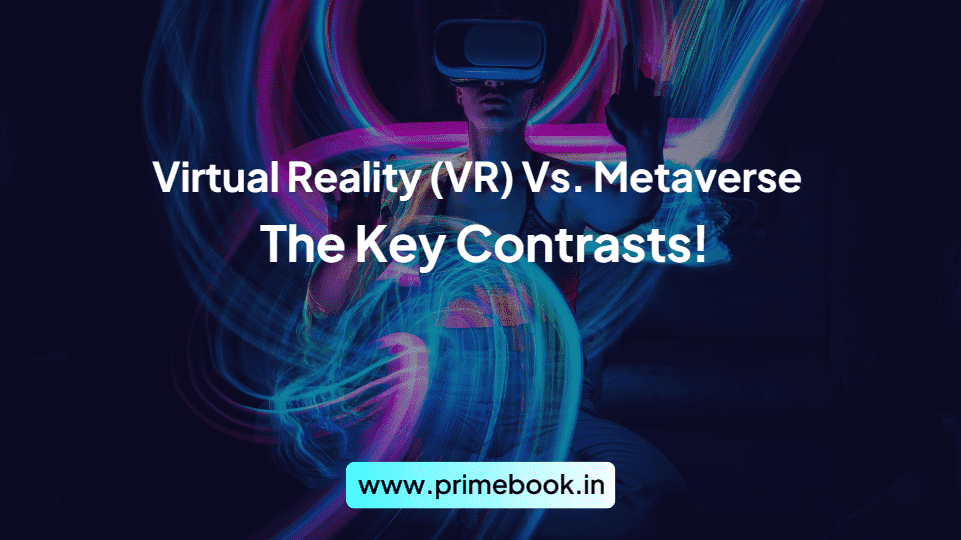Blogs / Trendy Tech Talks / Virtual Reality (VR) Vs. Metaverse: The Key Contrasts!
Blogs / Trendy Tech Talks / Virtual Reality (VR) Vs. Metaverse: The Key Contrasts!

Ananya Dasgupta
08 May 2024

Virtual Reality (VR) Vs. Metaverse: The Key Contrasts!
Table of Contents
In the 21st-century digital era, both virtual reality (VR) and metaverse are increasingly transforming the application of technology in our everyday lives. Hence, they often stay in the word of mouth! Although VR and metaverse aren’t any competing concepts, there are certain differences between them. In this blog, you can unveil the key contrasts between VR and metaverse and gain insights into the unique possibilities they come with!
Difference Between VR and Metaverse Definitions
Virtual reality or VR is the computed-generated simulation of a virtual environment that supersedes your immediate physical surroundings and gives you a life-like experience as and when you interact and engage within it.
Metaverse, on the other, is an expansive digital reality that perfectly combines various aspects of virtual reality, augmented reality, blockchain technology and cryptocurrency, social media, and online gaming.
The Difference in Scopes Between VR and Metaverse
Virtual reality (VR) has massively bloomed in the post-pandemic era due to its enormous significance across various industries, from native marketing and retail to education, healthcare and travel. VR represents a niche digital experience where you enter into a new fantasy world, partially or completely detaching yourself from the external physical reality.
Also Read: Role of Virtual Reality (VR) in Classroom Education
Metaverse is a relatively new technological revolution that broadens the scope of all digital realities and platforms, being the interconnected network of many such realities and experiences. While metaverse is already being used in the field of gaming and entertainment, there is a whole lot of scope to leverage this cutting-edge technology in other domains as well.
Differences in Their Interactive Experience Level
Interactions in VR technology are typically limited to a specific game, app, platform, or website. Although you can derive a pretty focused immersive experience in a VR, its social connectivity is much more limited. To experience VR, you ought to utilize a VR-specific device, like a VR headset, VR glasses, and so forth!
In contrast, interactions in a metaverse world are more dynamic and socially connected. Metaverse offers a shared virtual environment where you can have a fictional ‘avatar’ character. Further, by using this fictional identity to engage with people, play games, learn and work collaboratively, build and own virtual assets, trade, and seamlessly switch between different experiences.
Differences in Accessing VR and Metaverse
You can access VR technology by using a powerful computer console, VR headset, VR helmet, VR gloves, VR goggles, etc. Hence, it often becomes a cost barrier for many people willing to fetch an immersive virtual experience.
Likewise, accessing metaverse technology requires many more devices and tech gadgets, given that it’s a combination of multiple digital realities and experiences. You would need smartphones, computers, consoles, VR or AR headsets, VR or AR glasses, Microsoft HoloLens, Holographic displays, etc.
However, the metaverse world is more like “a location on the internet” that stays active even when you log off. Whereas; the VR world exists only when you wear a VR gadget and turn it on.
To wrap up, it’s salient for you to understand that VR and metaverse are different only in their level of digital immersion and connectivity. Neither do you need VR to delve into the metaverse world. Nor do you need Metaverse to utilize VR. But they mostly work hand in hand to give you the ultimate experience of the digital world.


 Related Blog
Related Blog









